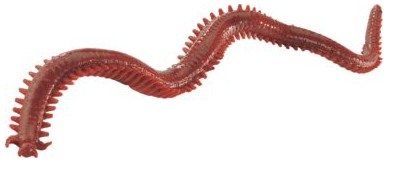7 Easy Facts About Where To Find Red Wigglers Shown
Table of Contents6 Easy Facts About Where To Find Red Wigglers ShownWhere To Find Red Wigglers Can Be Fun For Anyone5 Simple Techniques For Where To Find Red WigglersThe Single Strategy To Use For Where To Find Red Wigglers
Lure fishing with worms is a reliable, eco-friendly method that can help you reel in a large range of fish varieties. And it's everything about the details, particularly if you wish to land the big ones. However with so many kinds of angling worms offered, understanding which ones to pick as fish bait is a type of scientific research.Today, we're chatting regarding the lotion of the crop of fish baits: worms the holy grail of bait angling - Where To Find Red Wigglers. You could assume freshwater worms are the finest freshwater lure, however right here's a whole world of wormy wonder out there waiting to be discovered!
Grab your lure pail and get ready to join the ranks of the worm-wielding elite by finding out all regarding the slimiest, squirmiest, and a lot of effective fishing worms around., these are the staple worms in the fishing community, also, and for a great reason.
The smart Trick of Where To Find Red Wigglers That Nobody is Discussing
While Nightcrawlers may have a syndicate on the fishing scene, don't mark down the power of various other worm ranges. These little wigglers are your secret tools if you're looking for a proven way to catch smaller sized fish.
These black-and-yellow worms are tiny yet mighty, packing a strike when it comes to drawing in fish, specifically smaller ones. Their soft texture and pleasant scent make them alluring to Panfish, Trout, and Crappie, in addition to Chub, Carp, and even Catfish. Although not technically a worm (it's really moth larvae), these little pests have a track record for being a delicious reward on the block as a result of their high-fat material (according to the fish, anyhow) and have actually additionally proven to be decent fishing worms during the chillier periods.

6 Easy Facts About Where To Find Red Wigglers Shown
Worms are delicate to warmth and light, and they can die promptly if exposed to them. Prevent overcrowding the container, as this can trigger tension to the worms and lead to their death.
Grab image source your rod and reel, stock up on some top quality worm lure, and get prepared to hook your dream catch! Experiment with various sorts of fishing bait worms and discover out what works best for you in your fishing experiences. Wondering where to acquire worms for angling? At Uncle Jim's Ranch, we've got a wide array of angling worms and tools up for sale that are certain to lure in even the wariest of fish.

If you're dealing with hostile fish or angling in a "catch and launch" area or one that only enables fly and man-made appeals, after that it's time to burst out the attractions. It depends upon what you're fishing for and where you're angling. Red worms are smaller and, thus, wonderful for trout and panfish, while Nightcrawlers are bigger and much better for larger species like bass and catfish.
Where To Find Red Wigglers - The Facts
Naturally, capturing worms isn't everyone's favorite. If you're not in the mood to get your hands filthy and wondering where to locate worms, you can just order them from Uncle Jim's Worm Farm. Why bother with the problem of excavating when you can have them supplied right to your doorstep?.
Fishing with Worms is all regarding selecting the best worm, especially if you want to land the large ones. Many anglers have purchased into the idea that the bigger the worm the much better. However, they are concentrated on the wrong priorities. To determine what are the very best worms for view website bait fishing we have evaluated 4 really usual worms as angling lure, the Red Wiggler, the preferred Canadian Nightcrawler, the African Nightcrawler, which is incredibly popular in Australia, and lastly the European Nightcrawler.

That being said, when we fished with Red Wigglers we had pretty excellent success. They are not given the name "Red Wiggler" for absolutely nothing. They are rather active on the hook and consequently, appear to bring in fish fairly well. Due to the fact that these worms are likewise one of the most common composting worm in the globe and can be raised in a regulated atmosphere extremely conveniently, they are generally readily available locally and are easy to locate.